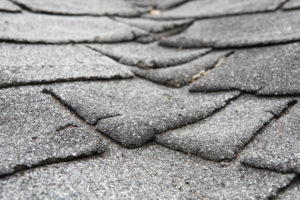Inspecting Your Roof for Damage Caused by High Winds

In the aftermath of weather like this, you should take the time to check up on your roof and make sure it hasn’t been damaged. Identifying problems now will allow you to fix them properly so that one or two missing shingles today doesn’t turn into leaking and water damage down the road.
What Should I Do if My Roof Has Been Damaged by Winds and Needs to Be Fixed?

Wind-related damages can usually be covered by insurance, but make sure you check the details of your specific policy to confirm. In addition to a more permanent fix, insurance companies typically require homeowners undertake emergency repairs to prevent further damage. We are happy to assist you with the process.
Many suppliers offer warranties on their roofing products as well. GAF, for example, provides coverage for winds up to about 210 km/h on most of its shingles (3-tab excluded). Please keep in mind that wind damage is not covered in our 10-year workmanship warranty.
As a warning, we would like to remind you to never allow a door-to-door roofer who shows up after a storm to go onto your roof. These “storm chasers” are often scam artists who might cause additional damage to your roof, take the insurance money and do a shabby job with sub-par materials, or leave town altogether after they’ve pocketed your deposit.
Click here to read more about the dangers of storm-chaser roofers.
How Can High Winds Damage My Roof?
Strong winds typically damage roofs in one of two ways, either by the sheer force of the wind itself or through the debris it picks up, carries, and throws against your roof.
- If strong winds come across any weak spots (like faulty fasteners), they’ll be quick to exploit them—getting underneath shingles and often shredding them or lifting them right off. Roof corners and edges tend to be particularly vulnerable as they feel the brunt of the wind’s wrath.
- With airborne debris, damage can be moderate or nonexistent if only small twigs and leaves are blown onto your roof, but larger objects like tree limbs or whole trees themselves can wreak expensive and significant havoc.
What Do I Need to Look for?
 First, take a walk around the outside of your home to carry out an exterior check-up:
First, take a walk around the outside of your home to carry out an exterior check-up:
- Examine your shingles. Are there any that are loose, missing, cracked, dented, scratched, or marked in another way? You’ll need to replace any that are no longer there and take a closer look at those that show evidence of damage like ‘bruising’, which might indicate that your shingles’ protective coating has been compromised.
- Keep an eye out for damage to your roof’s other elements like ridge caps and vents, chimneys, skylights, eavestroughs, and soffits and fascia. Each component plays its own critical role in helping your roof perform its best, which is why you want to make sure everything is in good condition especially after your home and roof has been hit by strong winds.
- Look for fallen tree limbs and other debris, paying attention to things that both have fallen and are now resting on your roof as well as things that could fall like a branch that’s been left hanging by a thread. You want to remove anything that’s already made contact with your roof and attend to anything that may cause trouble at a later date. The rule of thumb with trees is that they should be cut back about six feet from your roof.
When it comes to outdoor inspections, make sure you keep your own safety top of mind. Always wait until after the wind has died down to take a walk around your home to reduce the risk that you yourself might be hit by flying debris.
Second, perform an inspection inside your home:
In the days and weeks that follow a high wind event, keep an especially watchful eye out for signs of water damage like stains on walls and ceilings and evidence that your insulation or roof structure has been impaired.
We hope your roof and home made it through the high winds unscathed. For those homeowners who weren’t so lucky, get in touch with Herb Lodde. We’re here to help you assess and fix any damages caused by windy, stormy weather so your roof is ready to stand up against whatever else Mother Nature has in store for us this spring!
Serving homeowners in Burlington, Hamilton, St. Catharines, and the Niagara region.
Like this? You might also like:

